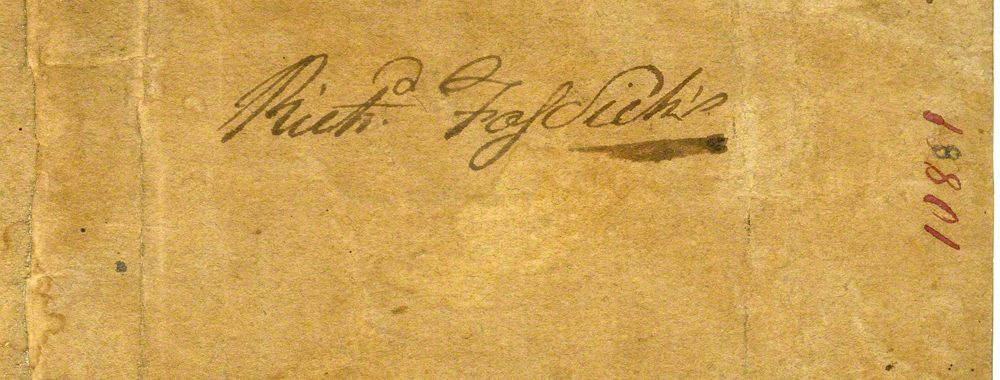
CMC Blog
The Holt Broadside Printing of the Declaration of Independence
By: Scott Gampfer, Associate Vice President for Collections & Preservation
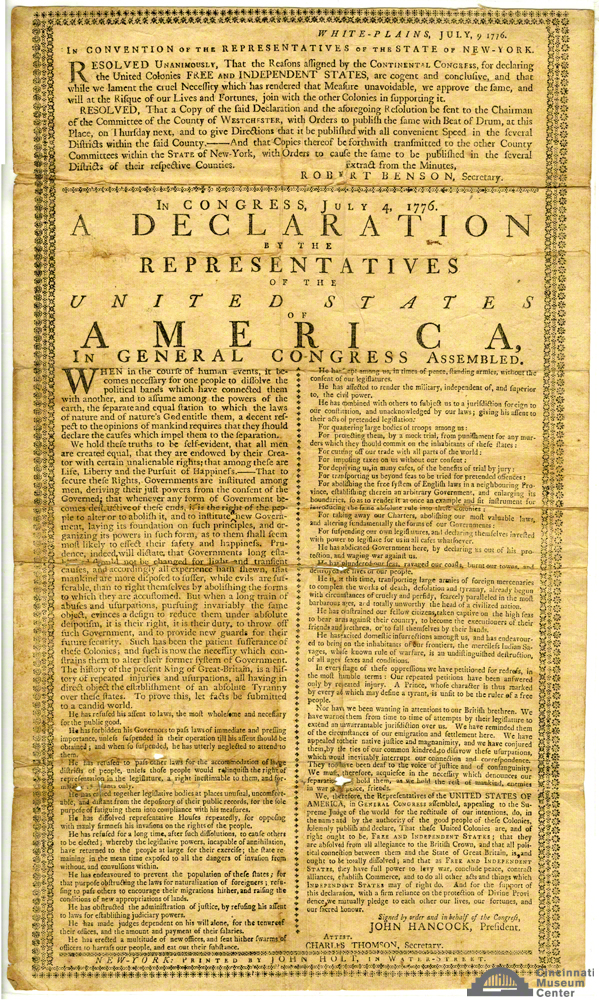
Copy of the Holt broadside printing of the Declaration of Independence from the CMC Printed Works Collection.
On July 4, 1776, the Continental Congress, meeting in Philadelphia, adopted the Declaration of Independence, which declared the thirteen colonies free and sovereign states, independent from Great Britain. The delegates of only twelve of the thirteen colonies voted to adopt the declaration on that date since the delegates from New York were not authorized by their legislature to vote for or sign the document. The matter would have to be taken up by the New York Provincial Congress in White Plains.
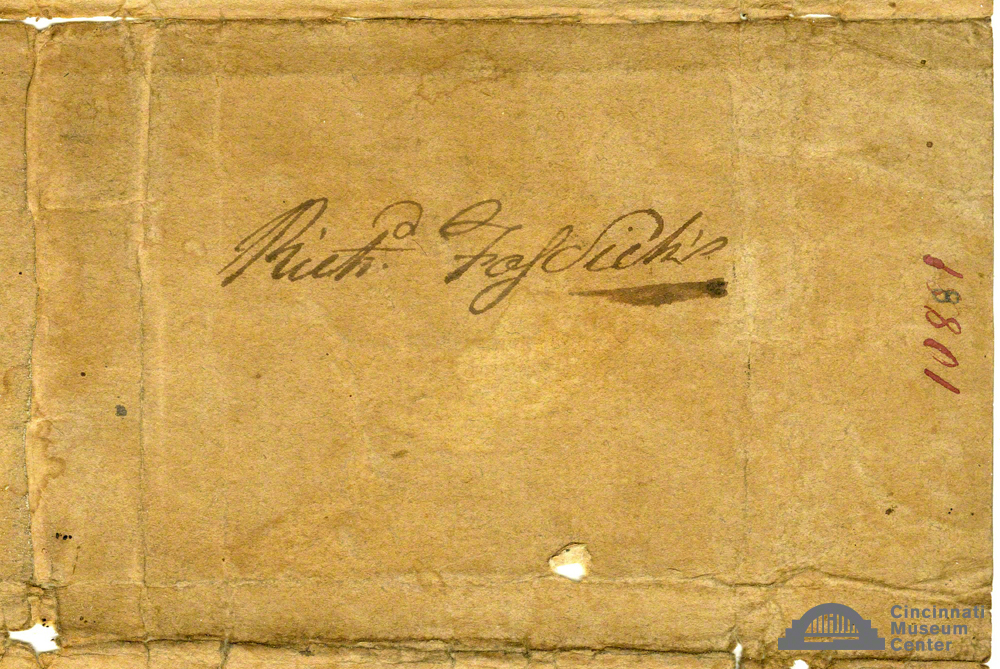
Back of CMC’s copy of the Holt broadside showing Richard Fosdick’s signature and the red ink cataloging number from the 1870s.
On the evening of July 4th, 1776, Philadelphia printer and engraver John Dunlap, official printer to the Continental Congress, was given an order to print broadside copies of the Declaration of Independence. It is believed that Dunlap likely printed at least 200 copies that night and perhaps more.
The next morning copies of the broadside were sent by Congress to commanders of the Continental Army, to various committees and assemblies of the colonies, and a copy was sent to the New York Provincial Congress in order to get its approval. That copy arrived at the Court House in White Plains on July 9th. The Provincial Congress then took up the matter of independence and by afternoon had passed a resolution that approved the Declaration of Independence.
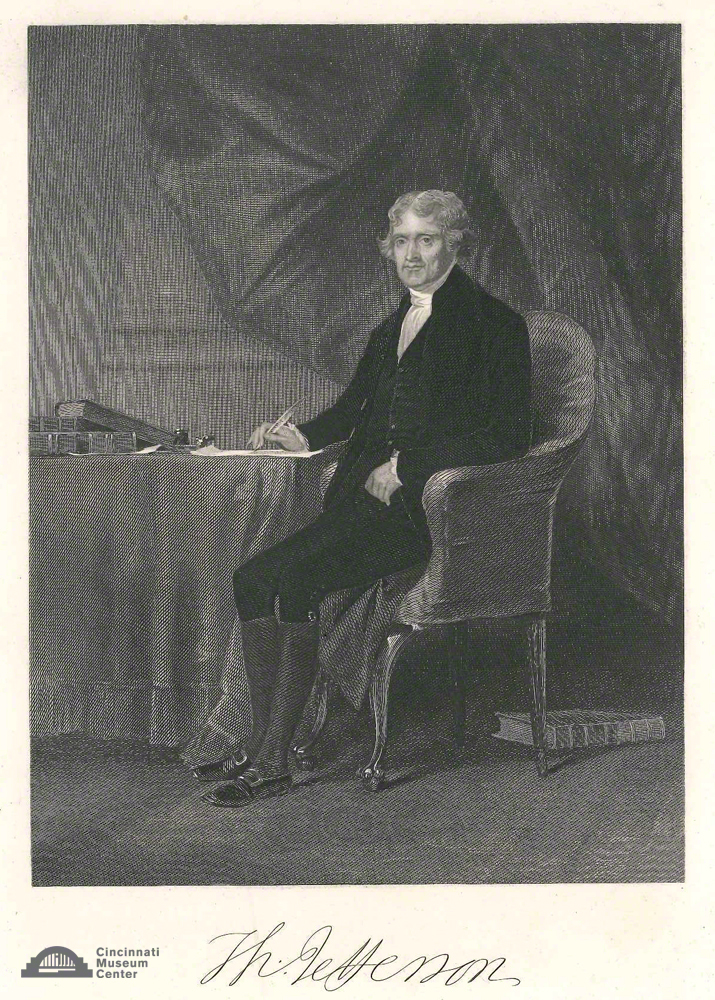
Portrait of Thomas Jefferson, principal author of the Declaration of Independence. CMC Photograph Collection.
The Declaration had now been unanimously approved by all thirteen colonies. The New York Provincial Congress ordered that the Declaration be printed as a “hand-bill,” or broadside. New York printer and newspaper publisher John Holt was given the job of printing 500 copies of the Declaration in broadside form. His printing carried the full language of the Provincial Congress’ resolution at the top of the sheet and his own name at the bottom.
Copies of the Holt broadside of the Declaration were sent to the Continental Congress in Philadelphia. Congress was then able on July 19, to order an official engrossed copy of the Declaration of Independence to be prepared on parchment and then signed by every member of Congress starting on August 2, 1776.
The collections of the Cincinnati History Library and Archives at Cincinnati Museum Center contain one of the very few remaining copies of the Holt Broadside of the Declaration of Independence.
The signature of Richard Fosdick appears on the back of this copy. Fosdick was born in New London Connecticut in 1765. In 1810, he brought his family across the mountains and down the Ohio River to settle in Cincinnati. Most likely, he brought this document with him. Richard’s older brother, Thomas Updike Fosdick, served in the American Revolution and participated in the battle of White Plains.
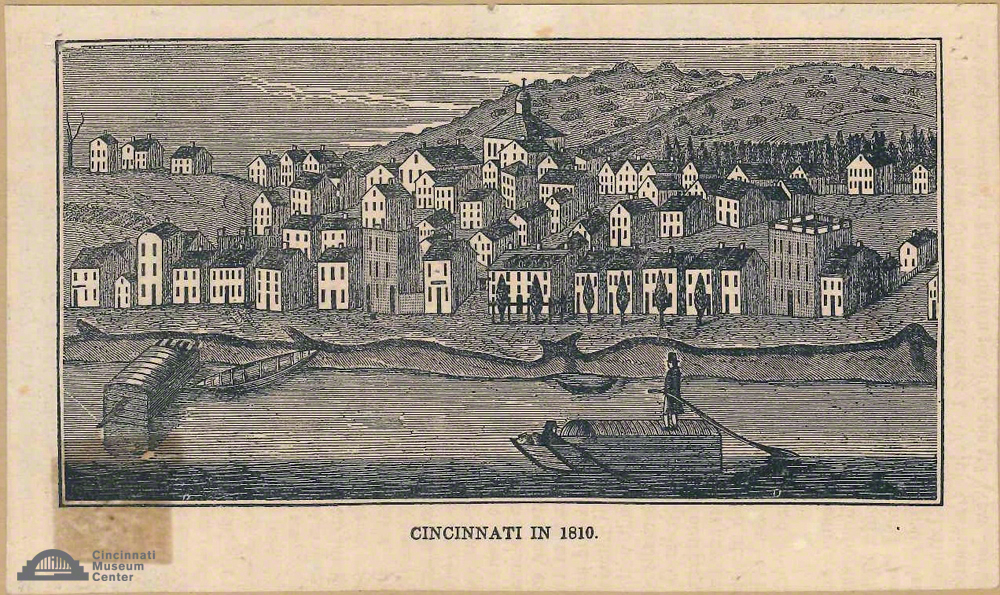
Engraving of Cincinnati in 1810 from Historical Collections of Ohio by Henry Howe, 1851. CMC Photograph Collection
Once in Cincinnati, Richard established a store where he experimented with the preservation of pork and beef, making him Cincinnati’s first pork packer. Fosdick served as a member of Cincinnati’s first town council in 1815 and served as county treasurer in 1829. The Western Spy newspaper carried an account of Fosdick’s participation in the Fourth of July celebration in Cincinnati in 1813. Fosdick was one of the citizens who offered a toast at the ceremonies which also featured a reading of the Declaration of Independence.
Fosdick and his wife, Phebe L’Hommedieu had seven children including one born after their arrival in Cincinnati. Phebe passed away in 1826 and Richard in 1837. Both were originally buried in the Episcopal burying ground where Washington Park is located now, but their remains were removed to Spring Grove Cemetery in 1849.
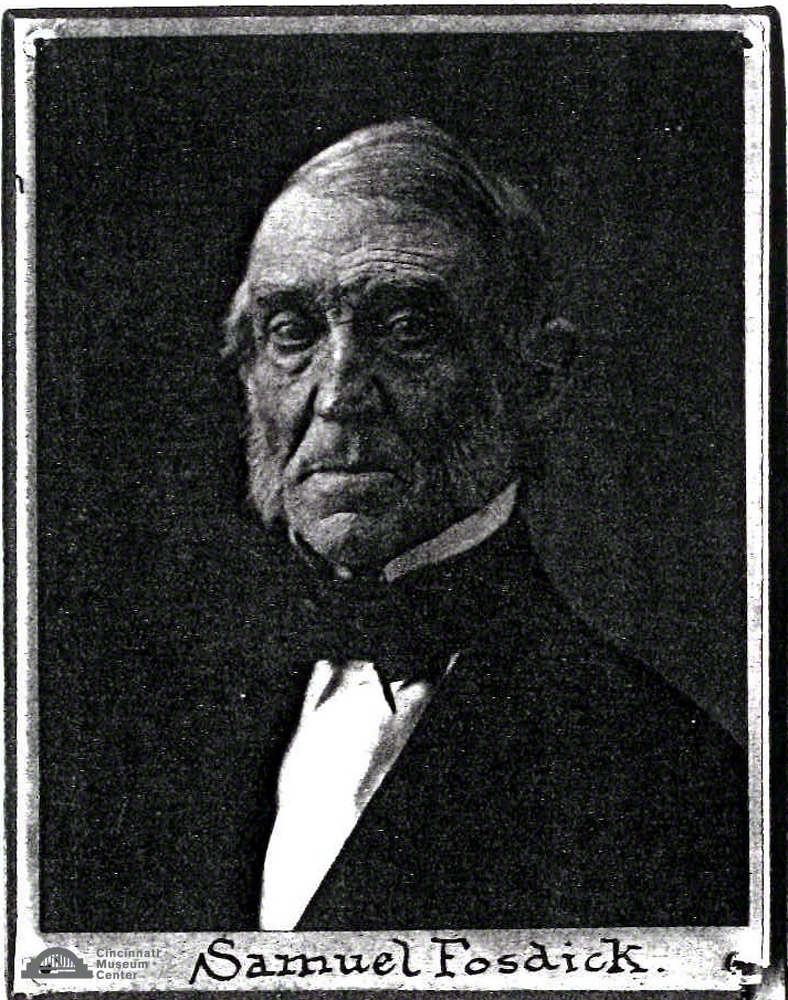
Samuel Fosdick, Son of Richard and Phebe Fosdick. CMC Photograph Collection
It is likely that one of the Fosdick’s children or grandchildren donated the document to the Historical and Philosophical Society of Ohio (predecessor of the Cincinnati History Library and Archives). Fosdick’s sons Samuel and Henry Nicoll served as executors of his estate and one of his grandchildren, Frances Dering Jones became a life member of the Society in 1885. A handwritten number (18801) in red ink appears on the back of the document near Richard Fosdick’s signature. This number indicates that the broadside has been in the library’s holdings since at least the 1870s when the librarian at the time, Julius Dexter, began numbering items in the collection.
The Declaration of Independence, Four 1776 Versions. Whitfield J. Bell, Jr. The American Philosophical Society, Philadelphia 1976.
The Declaration of Independence. Milestone Documents in the National Archives. National Archives and Records Administration, Washington, DC.
Early Printings of the Declaration of Independence. Seth Kaller, Inc., 2014
Museum Admission
Includes Cincinnati History Museum, Museum of Natural History & Science and The Children's Museum
| Adult: | $22.50 |
| Senior: | $15.50 |
| Child: | $15.50 |
| Member Adult: |
FREE |
| Member Child: |
FREE |
Members receive discounts!
Become a Member today to save on programs, exhibits and films throughout CMC.
Museum Hours
Open Thursday – Monday
10 a.m. to 5 p.m.
Closed Tuesday and Wednesday
Closed Thanksgiving Day and Christmas Day
Member’s-only early entry: Saturdays at 9 a.m.
Customer Service Hours:
Monday – Sunday, 9 a.m. to 5 p.m.
